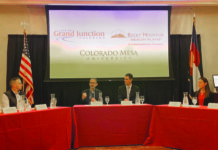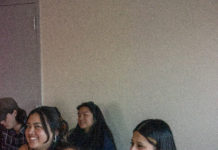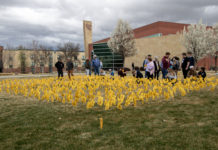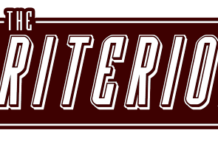Colorado Mesa University faculty and students have been gathering photographs, via drone, of land around the area to survey its growth. Environmental Science major,Gray Koenemann, visiting research professor Richard Alward, Environmental Science Professor Tamera Minnick and one other student are all involved in the project.
“We can develop a new approach for monitoring restoration that is more cost effective and more informative than what is currently being used,” Alward, Ecological Society of America Certified senior ecologist and Federal Aviation Administration certified UAS (Unmanned Aircraft System) remote pilot, said. “Currently you have to hire people who go out on the ground and sample small areas to look at what plants have regrown or whether there’s erosion.”
The process is expensive and will take many hours to complete while there is only so much that can be researched.
“If we can do something with drones to look at remote sensing, we can cover the entire area of interest in the same or less time,” Alward said. “And if we can get the important amount of vegetation out then we have accomplished our goal.”
Once the drone collects the photographs, the data will be interpreted by the two students. The data will be used to identify desirable and not-so-desirable key species on site being weed growth, tree growth, brush, mountain shrubs and thistles.
Part of the project is finding out how it can be made less expensive.
“Using [a] drone to cover large areas so that we can cover a couple dozen sites in a day. Whereas generally, it was one site per person per day,” Alward said.
There are four members from CMU involved as well as other collaborators. Not all students have been able to go out into the field.
“Another partner is [United States Geological Survey] USGS and they have been doing some work around the Colorado Plateau on how well restoration is accruing on oil and gas well pads,” Minnick said. “They are the ones that are using satellite images.”
Minnick suggests that USGS is allowing for more work to be done with the help of satellite images.
“We’d like for them to compare on the groundwork. They are going to compare the drone to satellite imagery to work out different sorts of information can be gleaned from those different approaches,” Alward said.
The ability to compare the drone images with satellite imagery allows for more data to be collected and more land development in the future. The Bureau of Land Management is very interested in this project and looks at using the obtained data for future environments.
The drone can track oil and gas disturbance, grazing allotments, weed infestation, overuse in one area and under use.
“We wanted to work with public land managers. We have an ongoing project in Rio Blanco county. We had those sites we were already working at on the ground so we worked with [Bureau of Land Management] BLM to add the drone part to the project,” Alward said.
Alward suggested that having a drone will make the project easier for land surveillance.
The project is centered around oil and gas activity, being partially funded by CMU unconventional energy center from a grant two weeks before school.
“Now that Rich has all the images he sends them off and they create mosaics. These multispectral images that the drone takes. They are really big with a lot of data,” Koenemann said. “There are five bands of data. When you take a picture with a multispectral image you get a spectral response. That’s what essentially we were going to be analyzing is the spectral response of the vegetation and the soil on these restoration sites.”
The project will be using images that have been transformed into readable and researchable data that will allow for CMU students to see the color of the vegetation and the soil.
The images from the drone are able to be pulled up in a GIS and in Google Earth and will know the exact layout of the site.
“If you apply three bands to an image, water will respond as black or soil will be very red. You can distinguish between shrubs, bare soil, water, etc.” Koenemann said.
“We used ratios of red and infrared reflectance to categorize the living & growing vegetation (especially shrubs and trees, but also some grasses and other herbaceous plants (yellows, greens & blues). Not actively growing plants (dead grass, branches) are in red and orange,” Alward said. “The bare soil shows through as tan. We can calculate how much of the image is, for example, ‘blue’ to compare a recovering area to an undisturbed area”
Alward suggests that this allows for more calculated images and better data collecting.
“The opportunity to get more experience and be part of a research team was really exciting,” Koenemann said.
CMU students have an opportunity to be a part of this research team, that has given back to the community.
“This is so exciting. This is not something I ever imagined possible when I was a student. It’s now something that is affordable and we can make work,” Alward said.







